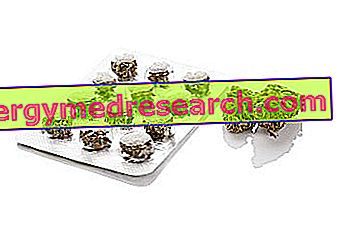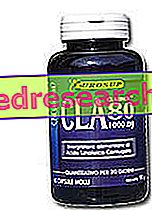
What is Evicel?
Evicel is a medicine used as a sealant (adhesive) and consists of two solutions: one contains the active substance fibrinogen (50 to 90 mg / ml) and the other contains the active substance thrombin (from 800 to 1200 international units per milliliter ).
What is Evicel used for?
Evicel is used by the surgeon to reduce localized bleeding during surgery if standard techniques are not sufficient. Evicel can also be used in addition to suturing in vascular surgery operations (interventions performed on blood vessels).
The medicine can only be obtained with a prescription.
How is Evicel used?
Evicel should only be used by an experienced surgeon. Before use, the two Evicel solutions should be mixed together using a special mixer supplied with the medicine. Evicel is then applied drop by drop or sprayed onto the wound surface to form a thin layer. The amount of Evicel to use depends on a number of factors, including type of intervention, wound size and number of applications.
The use of Evicel is not recommended in children as data on the safety and efficacy of the medicine in this age group are largely insufficient.
How does Evicel work?
The active ingredients contained in Evicel (fibrinogen and thrombin) are natural substances obtained from human plasma (the liquid part of the blood). When the two active ingredients are mixed together, thrombin breaks down fibrinogen into smaller units, the fibrins. These aggregate (adhere) to each other and form a fibrin clot that promotes wound healing, stopping bleeding.
What studies have been carried out on Evicel?
The effects of Evicel were first tested in experimental models before being studied in humans. As the thrombin solution contained in Evicel is also used in another medicine, Quixil, already authorized in 14 European countries, the company used some data related to Quixil to support the use of Evicel. The efficacy of Evicel has been the subject of two main studies involving a total of 282 patients. The first study compared the effectiveness of Evicel with manual compression (pressure applied directly with the hand) in reducing bleeding during a vascular surgery. The main efficacy parameter was the number of patients without bleeding (haemostasis) at the point of application four minutes after the application of Evicel or by hand compression.
The second study compared the effectiveness of Evicel compared to Surgicel (material used to help stop bleeding) in reducing bleeding during abdominal surgery (operations performed on belly organs). The main efficacy parameter was the number of patients without bleeding at the point of application 10 minutes after the application of Evicel or Surgicel.
What benefit has Evicel shown during the studies?
Evicel was more effective than comparative treatments in reducing bleeding at the point of application. In vascular surgery 85% of patients no longer bleed within four minutes of treatment with Evicel (64 out of 75) compared with 39% of patients treated with manual compression (28 out of 72). In cases of abdominal surgery, 95% of patients no longer bleed 10 minutes after treatment with Evicel (63 out of 66) compared to 81% of patients treated with Surgicel (56 out of 69).
What is the risk associated with Evicel?
Like other sealants, Evicel can also induce allergic reactions. In rare cases the patient may also develop antibodies directed against the proteins contained in Evicel with possible interference in the clot formation process. Accidental application of Evicel inside a blood vessel can cause thromboembolic complications (clot formation). For the full list of all side effects reported with Evicel, see the Package Leaflet.
Evicel should not be used in patients who may be hypersensitive (allergic) to fibrinogen, thrombin or any of the excipients and should not be injected into blood vessels.
Why has Evicel been approved?
The Committee for Medicinal Products for Human Use (CHMP) decided that Evicel's benefits are greater than its risks when used as supportive treatment in surgical interventions to improve haemostasis in cases where standard techniques are insufficient and to support suturing to obtain hemostasis in vascular procedures. The Committee recommended that Evicel be given marketing authorization.
More information on Evicel:
On 6 October 2008, the European Commission granted Evicel a marketing authorization valid throughout the European Union to Omrix Biopharmaceuticals SA.
The full EPAR for Evicel can be found here.
Last update of this summary: 08-2008.



